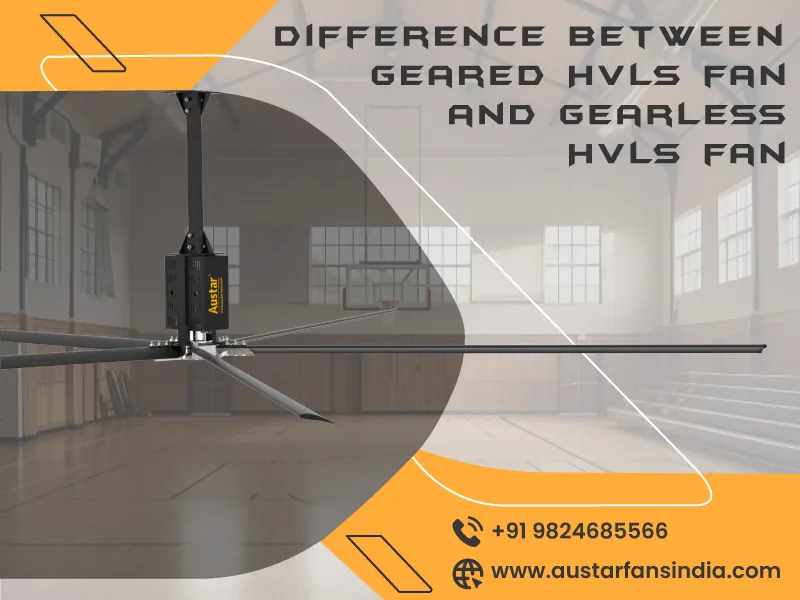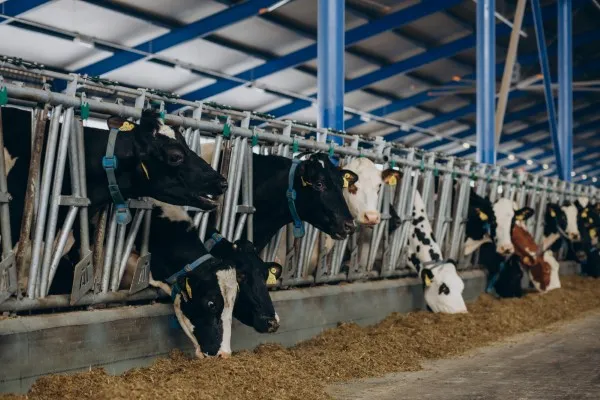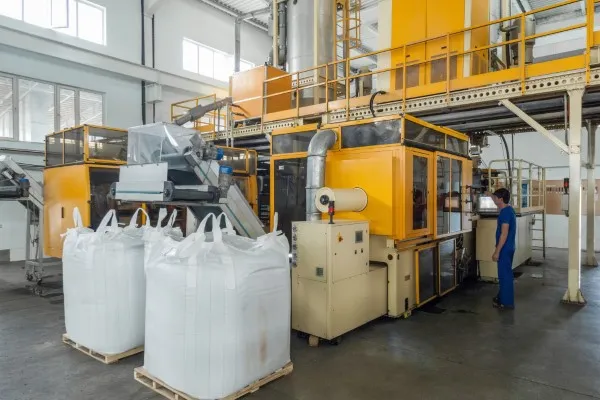Difference Between Geared HVLS Fan and Gearless HVLS Fan
What is The Difference Between Geared HVLS Fan & Gearless HVLS Fans

In the ever-evolving landscape of air circulation technology, AUSTAR Fan Technologies stands at the forefront, offering two cutting-edge solutions that have transformed the way we think about cooling large spaces—Geared HVLS Fans and Gearless HVLS Fans. In this comprehensive blog, we unravel the nuances that differentiate these two remarkable technologies, shedding light on their unique features and advantages.
Understanding the Basics:
1. Geared HVLS Fans:
- Motor System: Geared HVLS fans utilize a motor with a gearbox. This gearbox is responsible for reducing the high-speed rotation of the motor to a low-speed, high-torque output, suitable for the expansive blades of HVLS fans.
- Advantages: Geared fans often provide higher torque, making them well-suited for scenarios where overcoming air resistance is crucial.
2. Gearless HVLS Fans:
- Motor System: Gearless HVLS fans, on the other hand, employ a direct drive motor, also known as a gearless or direct-drive motor. In this design, the motor is directly connected to the fan blades without the need for a gearbox.
- Advantages: Gearless fans are known for their efficiency due to the elimination of energy losses associated with gearboxes. They also tend to operate more quietly.
Comparing Torque and Efficiency:
1. Torque Considerations:
- Geared Fans: Geared HVLS fans are known for providing optimal torque. This feature is advantageous in scenarios where overcoming air resistance is essential, such as in industrial settings.
- Gearless Fans: While gearless fans might have slightly lower torque, they compensate by offering smoother speed control and enhanced efficiency.
2. Efficiency in Operation:
- Geared Fans: The gearbox in geared fans can contribute to energy losses, affecting overall efficiency.
- Gearless Fans: Gearless HVLS fans, by eliminating the gearbox, operate with higher efficiency. This translates to more effective energy utilization and reduced long-term operational costs.
Maintenance and Noise Levels:
1. Maintenance Requirements:
- Geared Fans: Geared systems involve more components, potentially leading to higher maintenance requirements over time.
- Gearless Fans: Gearless HVLS fans typically have lower maintenance needs due to the absence of a gearbox.
2. Noise Level Differences:
- Geared Fans: Gearless fans are known for quieter operation due to the elimination of noise associated with gearboxes.
- Gearless Fans: Gearless HVLS fans operate silently, contributing to a serene environment without compromising on airflow power.
Conclusion:
In the land of HVLS technology, AUSTAR Fan Technologies has raised the standards by offering both Geared and Gearless HVLS Fans. The choice between these two remarkable technologies depends on specific application requirements, preferences, and the desired balance between torque, efficiency, maintenance considerations, and noise levels. As a pioneer in the industry, AUSTAR remains dedicated to providing versatile solutions that redefine comfort and efficiency in various environments. Whether geared or gearless, each AUSTAR HVLS fan stands as a testament to innovation, quality, and a commitment to transformative air movement.













